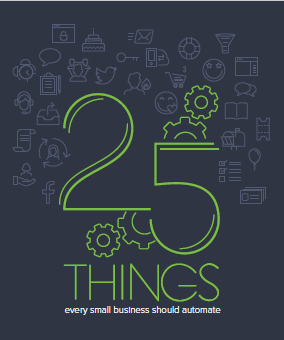Digital Marketing Success for Small Business
Digital marketing success can appear elusive, but it doesn’t have to be. Many small businesses share stories of trying Facebook or Google Adwords for the first time and being disappointed with the result. Then I start asking questions. Whom did you target? What did you offer? What did you do with the lead? Show me your sales funnel — step by step.
As I start reviewing what they’ve done, I invariably start explaining the basics of what they should have done.
And that’s how I came up with the list: 6 Ways to Increase Your Digital Marketing Success. I even turned it into an infographic you can download.
It’s not exhaustive. There’s more you can do. But it’s a place to start. And most small businesses need the basics so they understand where to start.
Always remember that 80% of leads are not ready to buy when they first engage with your brand. They need to be nurtured and you need a process that involves more than an ad and a sales call. This is the key to digital marketing success.
1. Define Your Target
Don’t target everyone, focus on your best opportunity. Describe your “ideal” customer. Go beyond basic demographics and write down their interests, challenges, pain points and what would make their life better (hopefully, your product!). Many businesses spend too much time listing the attributes of their product rather than understanding their target. Sometimes you just have to be able to articulate the emotional benefit of your category and own it. All digital marketing and content at each stage of the sales funnel will be guided by this information.
2. Use Lead Magnets
Offering lead magnets is the surest way to get a response, engage with your prospect and build your list. Your goal is to get an opt-in so that you can market to the prospect via email, text, social media or other avenue. Create several lead magnets (free content, product/service offers, free trial, video or books) to appeal to your target at different stages of the sales cycle. Feature these lead magnets, and NOT YOUR PRODUCT, in your digital advertising, on your site and in social media.
3. Use Landing Pages
Use a separate landing page for every ad, every call-to-action on your site and every link in a social media post. Force the opt-in with a motivating, clear offer on a landing page with no site navigation. Such discreet use of landing pages enables analytics to evaluate the source, offer and resulting sales.
4. Build site traffic
Many small businesses think if they build it (their website) they (customers) will come. Not without good SEO! Get a good SEO plug-in, such as Yoast, for your site and check out your SEO health with a service, such as Moz. Local businesses much set up a Google Business Page and aggressively get customers to post reviews on Yelp and Google. It’s well worth it to take a SEO course or hire an expert for basic SEO training.
5. Use Strong call-to-actions on site
I’m regularly shocked by how most sites lack call-to-action buttons on their site. Most visitors will simply leave the site without ever taking an action or giving up any information. Wasted traffic. Wasted opportunity. There’s no point in building your site traffic if you don’t get opt-ins and build your email list. And few buttons should ever say “Buy Now.” Buttons should direct visitors to take a specific action that’s relevant to the particular page, the stage of the sales cycle or the lead magnet or next step being offered. They are an important tool that should fit into the content perfectly and be enticing enough to click. I would like to forever banish “Buy,” “Learn More” and “Submit.”
6. Use Marketing Automation
What do you do with every lead coming in? You need to nurture them with a series of specific emails and content offers based upon behavior until they are ready to talk to a salesperson, buy online or come into a store. It bears repeating that 80% of leads are not ready to buy when they first interact with your brand. It often takes 8 touches or more to convert a prospect.
Marketing automation is critical to conversion and digital marketing success. Staff in a small business do not have the time, organization or capability to provide the engagement and information delivered with automation. The improvement in conversion is usually dramatic and can become more dramatic over time as it is used to upsell and retain existing customers.

25 Things Every Small Business Should Automate
Welcome to an education about marketing automation. You'll be redirected to a download of the Guide.


7 Comments
Leave your reply.